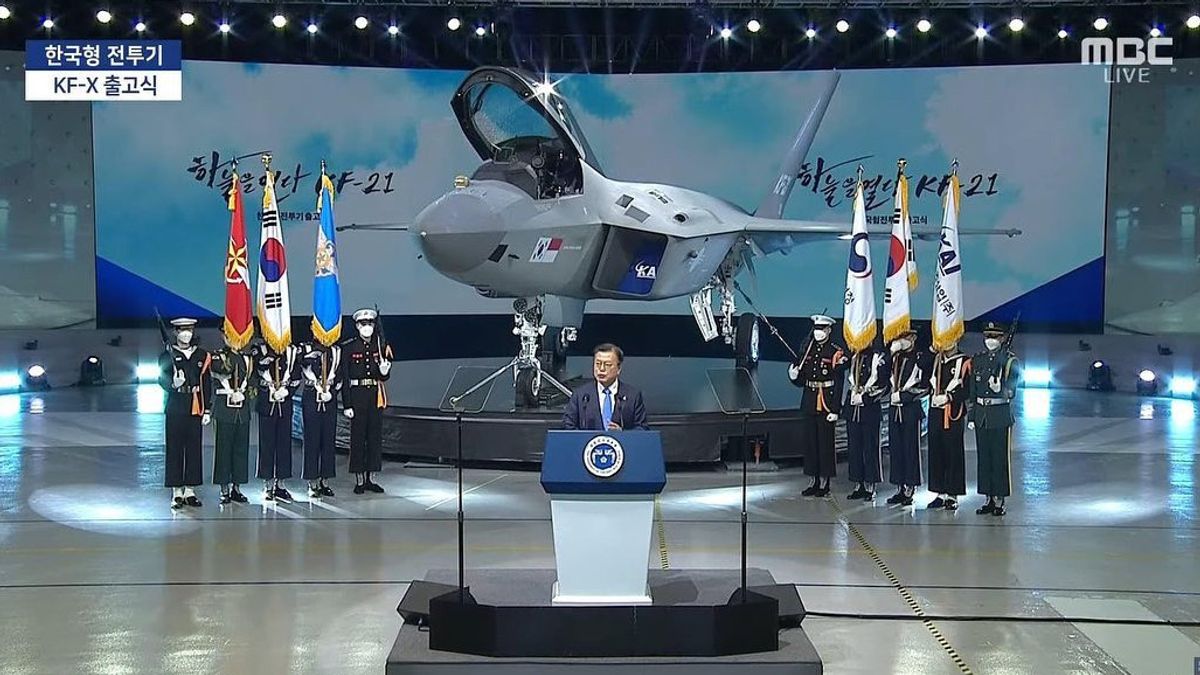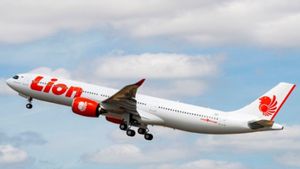JAKARTA - South Korea officially launched the KF-21 Boramae fighter jet, formerly known as the KF-X, marking the success of an upcoming generation fighter development project Friday, April 9.
The launch was conducted directly by President Moon Jae-in visiting Korea Aerospace Industries (KAI) in Sacheon, South Gyeongsang Province. The launch was also attended by the Minister of Defense of the Republic of Indonesia, Prabowo Subianto, as a partner of this project.
"A new era in self-defense has come and we have set a milestone in the progress of our aviation industry", said President Moon launching KoreaTimes.
"I would also like to express my deepest gratitude to the Government of Indonesia for trusting Korea's capabilities and becoming a partner in this joint development project. Until construction is completed and the two countries are ready for mass production to penetrate the third country market, Korea and Indonesia will work together", he continued.
Korean engineers have led the KF-21's design and development process, localizing key technologies including active electronically scanned arrays, infrared search and tracking systems, electro-optical targeting pods, and electronic warfare circuits.

When Boramae completes its final test, South Korea will become the eighth country in the world to develop advanced supersonic jets with its own technology. Moon said mass production will begin after the final test, and Korea plans to deploy 40 KF-21s by 2028 and 120 by 2032.
"The government seeks to be one of the top seven aviation industry players by 2030, strengthening the independence of state technology in aircraft engines and other core technologies", said President Moon.
"Besides, the government will make long-term investments into technology for electric or hydrogen aircraft and urban air mobility", he added.
According to the government, 719 Korean businesses have participated in the development of the KF-21. About 65 percent of the more than 30,000 parts used in prototype aircraft are made in Korea, and the Defense Acquisition Program Administration and KAI plan to raise this percentage.
The government estimates the project has created 2.1 trillion won in economic effects and 12,000 jobs from 2016 to 2020. When it enters mass production, 100,000 new jobs will be created and an additional 5.9 trillion won of value will be generated, according to the government.

Meanwhile, according to CNN, South Korea will join the United States, Russia, China, Japan, France, Sweden, and a European consortium from Britain, Germany, Italy, and Spain, as makers of modern fighter jets.
Of these, only the United States and China have deployed domestically made fifth-generation fighter jets, aircraft featuring stealth technology, radar tampering capabilities, and advanced avionics that integrate onboard and long-range data to give pilots a complete real-time picture of their operations, according to NATO's Joint Air Force Competency Center.
Meanwhile, South Korea's Defence Acquisition Program Administration (DAPA) described the KF-21 as a 4.5-generation fighter jet because it lacked, for example, an internal weapons space that enhances stealth capabilities. However, analysts say the aircraft may be able to fly higher and faster than the united States' newest fifth-generation fighter, the F-35 Lightning II.
"The KF-21 was the first fighter made with domestic technology. This suggests that South Korea is now capable of building its own warplanes. It will also be a stepping stone to developing better fighter aircraft and operating locally developed weapons", said DAPA in a statement.
The English, Chinese, Japanese, Arabic, and French versions are automatically generated by the AI. So there may still be inaccuracies in translating, please always see Indonesian as our main language. (system supported by DigitalSiber.id)













